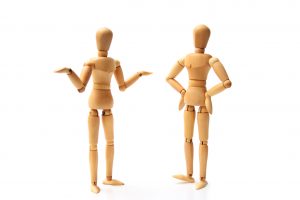North Shore Dance Society is excited to share this wonder article about the power of body language
Dancing is your autobiography in motion. Mikhail Baryshnikov once said ‘dance with me for 5 minutes, and I will tell you who you are.’ No matter the dance, our body language conveys a lot about ourselves.
A major part of learning to dance is learning how to convey yourself in different ways with your body. A ballroom dancer might want to show confidence and power for example, while a contemporary dancer could communicate softness and fluidity. But how do we do this?
Each body part can send a different message, and we must be consistent for that message to be believed. Let’s start with the top half of the body, and what it tells our partners, and our audience.
The Head
Straight: Conveys confidence and directness, especially with eye contact. Well-poised.
Upwards: Proud or arrogant. The neck is bared, indicating the person has no fear of the people around them.
Downwards: Shyness, self-doubt, sadness, or despair. Careful – this position can throw off your balance!
Tilted to side: Questioning, uncertain, curious.
Looking left/right: If combined with looking forward, creates a sidelong, or skeptical look. If panning from one side to the other, can indicate searching, fear, or frantic-ness. Held in one place, it can convey confidence.
The Chest
Puffed out: Pride, power, or arrogance. Male dancers (or men in general) may use this to look more attractive, or to intimidate others.
Collapsed in: Weak, frail, unsteady, self-protective.
Fixed vs fluid: A still and solid frame conveys strength and control, but too much muscle tension makes it stiff and awkward instead. A more relaxed torso with body isolations creates a sexy, sensual feel.
The Arms

Shoulders hunched: Stiffness, defensiveness, afraid or self-protective.
Shoulders down: Relaxed and confident. Similar to an upward head, the body is left open, indicating a fearless quality.
Close to body: Very defensive or self-protective, wounded, constrained.
Open away from body: Liberated and free, powerful and expressive, joyful, vulnerable.
Stiff vs bent: Straight arms create a strong, but robotic feel. By contrast, softly bent arms convey
This article was found at joyofdance
North Shore Dance Society